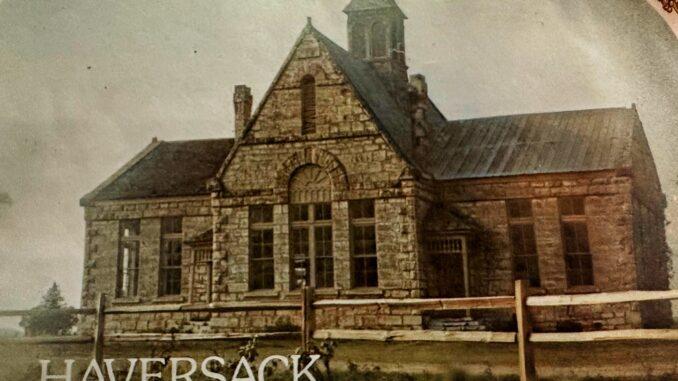
Texas’s real missionary story has been told many times. I know you’ve heard it…
In the 1600s, Spanish missionaries heading north from Mexico brought vine cuttings to plant when they crossed the Rio Grande and entered the frontier land of Tejas, now called Texas. Their vines were Criolla, a cultivar of a European vinifera wine grape that made its way from Spain to Argentina and on upward to Mexico and finally into Texas. These days, many people just referred to the Criolla grapes by the name “Mission” because they were used to make wine for sacraments in the Catholic services at the missions.
Fast forward to the 1970s, May 1974 to be exact, when a young UT grad and Houston marketing consultant Dean Joyner announced that his Haversack Wine Company would be opening its general office in Fredericksburg. He also announced that his wine company had a partner, a California wine producer. The goal was to begin a brand merchandising program built around the “haversack” theme. What’s a haversack? Well, read further and you’ll find out.
This marketing program was the culmination of two years of Joyner’s market research to sell wine that he said would provide “a taste of legend from the grapes of the Franciscans missionaries.”
Haversack Wine Company Launches in Fredericksburg
To start his venture, in 1974, Joyner and his wife Barbera moved into an old limestone block house in Fredericksburg at 414 Main Street next to Ludwig’s Flower Shop. From there, the Joyner’s made plans to sell and distribute wines made by his California partner and eventually convert to growing grapes in Texas. Joyner is quoted saying, “I hope Haversack Wine Company can be instrumental in furthering the development of production of wine grapes in this area.”

To his credit, Joyner’s market research correctly identified the Spanish Franciscan missionaries who brought the first European grapevines, the Mission grapes, to Texas. However, he was about a hundred years off from when this all really happened in Texas. He focused his narrative on the 18th century (1700s) when he said the Franciscan’s brought Mission grapes to Texas. However, it was actually in the 1600s when the first Mission vineyards were planted in Texas. This marketing man’s oversight can be forgiven because the Spanish missionaries’ accomplishment gave him the creative spark for his Texas wine marketing campaign, albeit with wine from California.
In a matter of months, Joyner started his PR effort in earnest by providing wine as prizes for various Fredericksburg events, attending local social gatherings and staging tastings for local merchants and even sponsoring a booth at the San Antonio Rodeo. Finally, in November 1974, Haversack Wines self-proclaimed “Legendary Trio” of wines went on sale in Fredericksburg. Joyner’s marketing approach was to provide these three wines in an attractive package, a burlap haversack, like the one he envisioned the missionaries used to carry their vinestock on horseback to Texas.
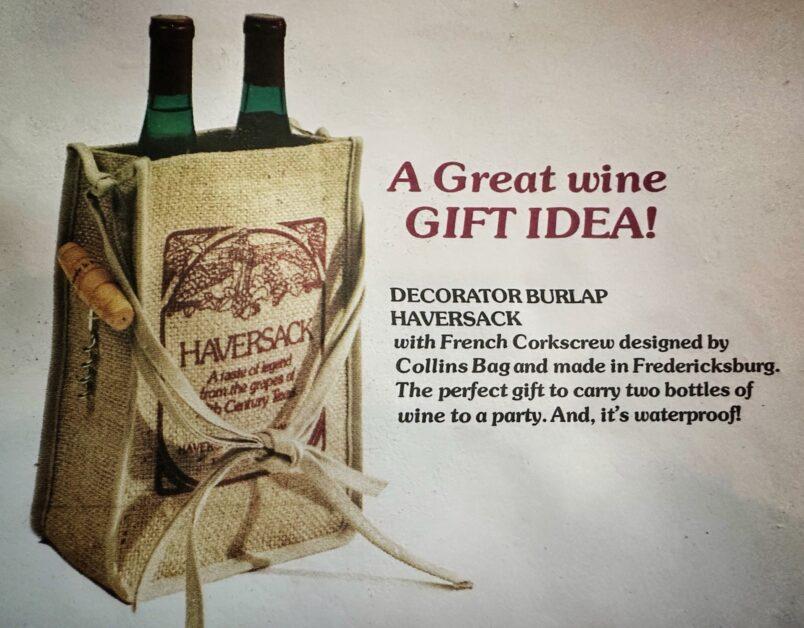
Joyner’s “Legendary Trio” of Wines
The trio consisted of the following wines:
Padre Sojourn – A red blend of Barbara and Criolla, advertised as the Haversack “answer to Beaujolais and Chianti. We call this the short journey of the Father through the vineyard.”
Straw Blanc – A white wine with a straw-tinged color made from French Colombard grapes and advertised as the grape “dominant in the making of California Champagne, and the finest luncheon wine in Texas.”
Adobe Rosé – It was made from Grenache grapes noted “famous for Tavel [in the Rhone Valley of France], the finest rosés in the world.”
Joyner was quoted on numerous occasions that each of his Haversack wines contained 5% of the Mission grapes, which harkened back to his missionary story.
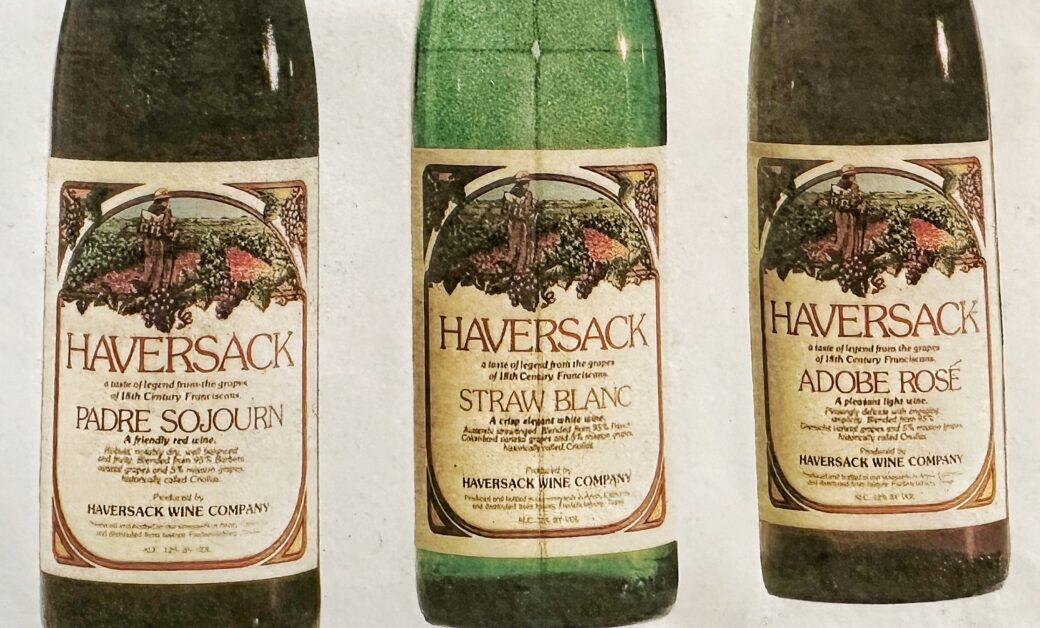
Digging into Fredericksburg’s Past
In December 1984, Dean Joyner and his wife Barbara announced that their Haversack Wine Company would undertake the renovation of one of Fredericksburg’s historical properties to fulfill their near-term business plans. The property was the old Morris Ranch School building built on a “Land Scrip” from Sam Houston and the Republic of Texas located in the Upper Pedernales Valley southwest of Fredericksburg’s town center.
The initial tasks of their project were restoration of the buildings’ external stonework and internal layout, and planting of a vineyard. Joyner advertised that, by the end of following year [1975], the historic building would house a wine tasting room, wine cellar, kitchen, restrooms, and company offices. Since the property was under the ownership of the Fredericksburg ISD, its board approved the lease of the Morris Ranch School building to Joyner’s company, and in January, a 15-year lease agreement was signed.
The Time Comes to Celebrate
Plans were made for big festivities at the new Haversack Winery property just off of Route 16 South and a right turn onto Morris Ranch Road. On March 1, 1975, the planned activities included the planting of the first Mission grapevines in the 14-acre vineyard-to-be and the blessing of the grapevines by invited Franciscan monks. This was to be followed by German music and refreshments. The local paper reported that the honor of planting the first vines at this site was accepted by Mrs. Lyndon B. Johnson with local, state and national guests invited to commemorate the event.
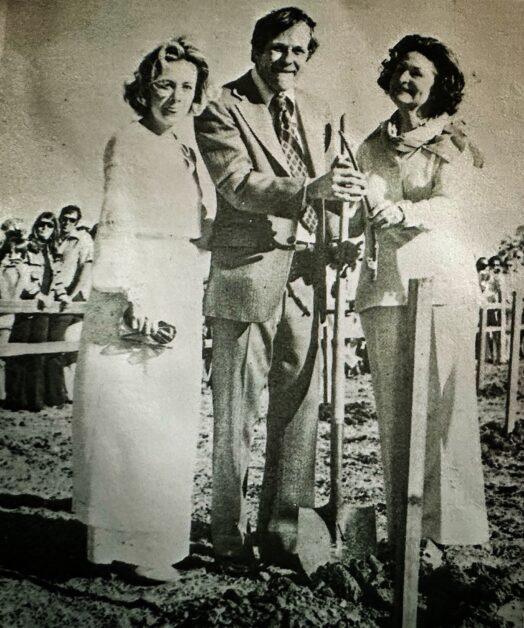
In February 1975, maintaining emphasis on his marketing plan, Joyner is quoted as saying, “Our biggest selling point we have is the legend of the haversack… We have the mystique the European wines have.” With the lead up to this Haversack Winery event at hand, the Joyner’s history-creating PR machine went into hyperdrive and his telling of history began to get more creative.
Joyner’s Missionary Grape Story Evolves
According to versions of his evolving missionary story released to the press at the time…
In 1879, the well-traveled and dusty Franciscan fathers found their way to Fredericksburg in Gillespie County to evangelize the southwest. I wonder of Joyner’s missionaries linked up with John O. Meusebach who in 1846 founded Fredericksburg. I’ve not found any other mention of missionaries arriving in Fredericksburg around that period of time.
According to Joyner’s evolving “historical” narrative, the Franciscans brought with them rootstock of Criolla [Mission] grapes in their haversacks and began their vineyards around Fredericksburg to produce wines for the sacraments.
Joyner’s Story Goes Even Further…
According to Joyner, for decades the Criolla grapes grew in the farmlands around Fredericksburg. These vineyards supposedly operated until 1954 when the vineyards disappeared. Joyner claimed that he was now bringing the art of winemaking back to Fredericksburg. However, his legend seems a bit confused here, too, because the Fredericksburg winery that ceased operations in 1954 was actually named The Texas Winery that was started by the Vorauer family, emigrants from Austria, and Mission grapes were not in their vineyard.
Recall that the facts of the real Spanish missionary story are that the Spanish missionaries actually arrived in the land now called Texas in the mid-1600s (not in 1879). They arrived and planted vineyards at their intended location on the Rio Grande at El Paso del Norte, now called El Paso, in far west Texas, about 500 miles from Fredericksburg. In 1757 missionaries started the mission Santa Cruz de San Saba near San Angelo but there has been no record of growing grapes at this location.
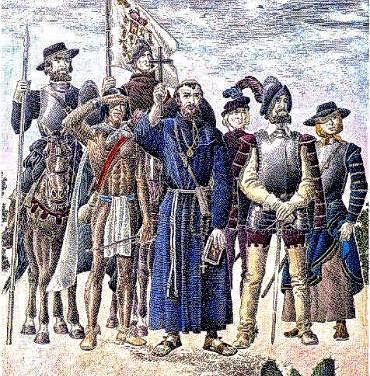
When is a Wine not a Texas Wine?
A United Press syndicated story hit the newsstands in a Kilgore paper in February, 1975, and in other papers around the state in the following months. The story’s writer said, “[Haversack’s] three wines are produced and bottled by Joyner’s Haversack Winery at vineyards in Arvin, California, but when distributed, the label proclaims it’s from historic Fredericksburg.”
This story also mentions Joyner describing his “creative” process that he said gave his wine historic Fredericksburg status.
The news story indicated that Joyner justified his claims of selling “historic Fredericksburg wine” by taking delivery of his California wine off the train in San Antonio. Then, he trucked it through Fredericksburg and then on to warehouses Dallas, Houston and back in San Antonio. I guess that the transshipment of Joyner’s wine through the streets of Fredericksburg is was what conveyed his wine special “historic Fredericksburg” status and it’s link to his still evolving legend.
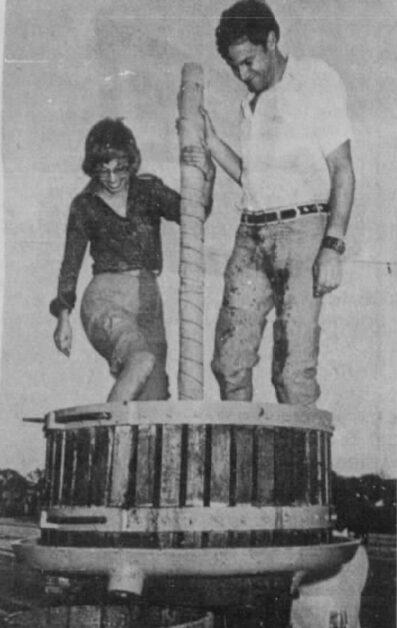
It’s Time for a Big Wine Shindig
March 1975 arrives, Mrs. Johnson shows up and plants a grapevine at the Haversack Winery Morris Ranch School site, one Mission grapevine of the 14-acre vineyard planned to be planted there. The local Fredericksburg paper reported that the event on had 2,000 people to witness the planting and partake in related festivities at Haversack Winery. At the event, Joyner was reported to have proclaimed, “I’ve found something that I can spend my life in, and I want to be buried right there”, as he pointed to a weed-grown cemetery near his winery-to-be.
Haversack Winery Making Progress
As of May, 1975, the Haversack Wine Company was still operating out of the old house in Main street in Fredericksburg. By Summer of 1975, as reported in the Fredericksburg paper, the renovation of the old school building had begun. In September, three large 1,250-gallon wine barrels were delivered to display at the winery. The same month Joyner hosted a group from the Midwest Advertising Executives Association as he prepared for the Haversack Wine Festival. It was supposedly the first festival of its type to be held in Texas and planned to take place in October. For the price of a $5 ticket, attendees got a glass and all the wine they could drink all evening.
It was also reported in October, that the Haversack Winery had two-acres of grapevines planted with 500 of the vines Mission grapes. The vineyard was reported to be on the south-southeast facing side of the hill next to the winery. However, no pictures could be found of a two-acre planted vineyard at this location. It might be worth a drive down south of town to see what might left there. If you find anything, please let me know; please post a comment to this blog.
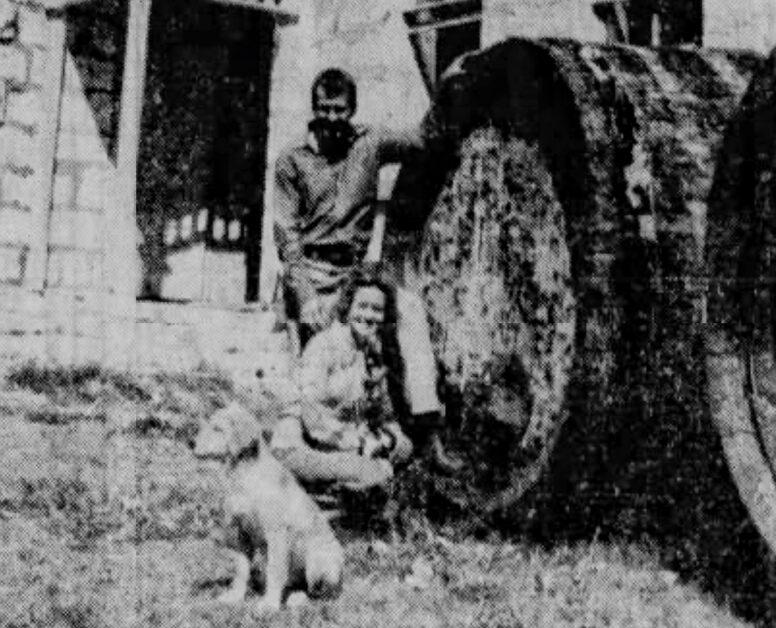
large wine barrels
The Haversack Legend Continues to Evolve
Starting in December 1975 through to April 1976, Joyner is quoted again in the newspapers around the state. The apparently syndicated story highlights the fact that “he [Joyner] decided to create of bit of history to help sell his product.”
Because Fredericksburg was settled by Germans, Joyner decided to include them in his marketing legend. He added a German emigrant named Halbedhl to his Franciscan story. Supposedly, Halbedhl stumbled upon an ancient grapevine along the Upper Pedernales River where Joyner’s Haversack Winery was located. When Halbedhl discovered the vine, he thought he heard the chant of priests coming from far away. The story also described Joyner as “a master salesman” while “some call him a hustler”.
That said, the story also claims that Joyner spent $50,000 to refurnish his winery’s history building. This included chasing owls and bats out of the belfry, repairing wooden floors, and outfitting it with an ancient wine press, enormous hand-carved wine barrels and racks for bottles of Haversack wines.
An Indication that Things were Not Right
In April 1975, the first indication that all was not right at the Haversack Wine Company can be found in the local Fredericksburg paper that reported topics discussed at the FISD board meeting. It indicated, “Several problems were encountered with the lease on the Morris Ranch School property… The board agreed on a May 13 deadline date for compliance by Haversack Wine Company on several stipulations in the [lease] agreement.”
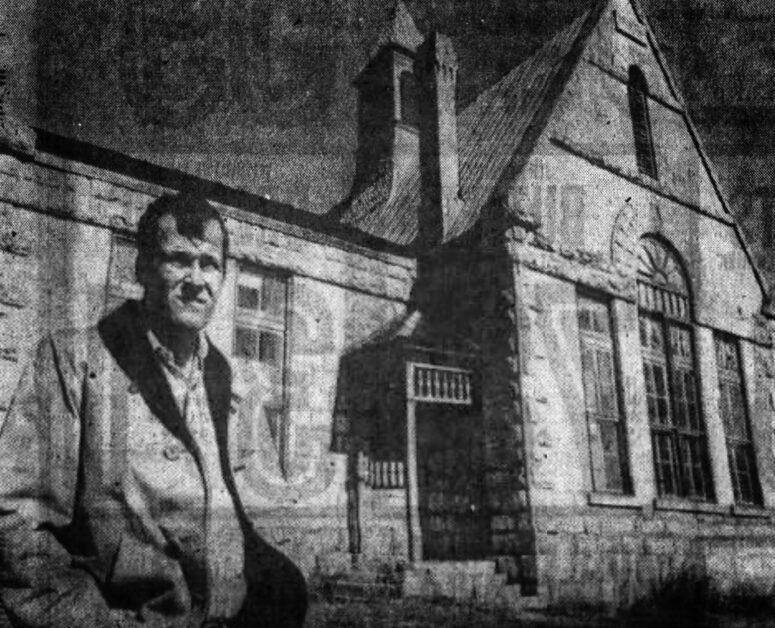
The following month the paper reported that the Joyner’s moved out of their house on Main Street and took quarters at the Haversack Wine Company’s Morris Ranch School location. For undisclosed reasons, at the same time, Joyner was reported trying to find a new California winery partner for his Haversack wines. On May 10, the San Antonio paper indicated the Haversack Wine Company as “being out of business.” A few days after this news appeared, a retraction was published letting the public know they were still in business.
Despite the retraction published in May, later in the year, the Fredericksburg paper reported on a December FISD meeting. At this meeting, the board voted to begin proceedings to cancel the lease agreement with the Haversack Wine Company because as explained by the school superintendent “the firm has defaulted on its lease payments with the FISD, which owns the Old Morris Ranch school house used by the Haversack company.”
With the wheels starting to coming off Joyner’s Haversack “cart”, there are no further news stories of the Haversack Wine Company wine activities. However, the Fredericksburg paper reported a default judgment against Joyner granted to Stein Lumber Company. A check of the business incorporation filings that I did on the Haversack Wine Company showed that it had an incorporation date February, 19 1974 that corresponds well will the dates in this story, and a dissolution [end of incorporation] date of March 15, 1976.
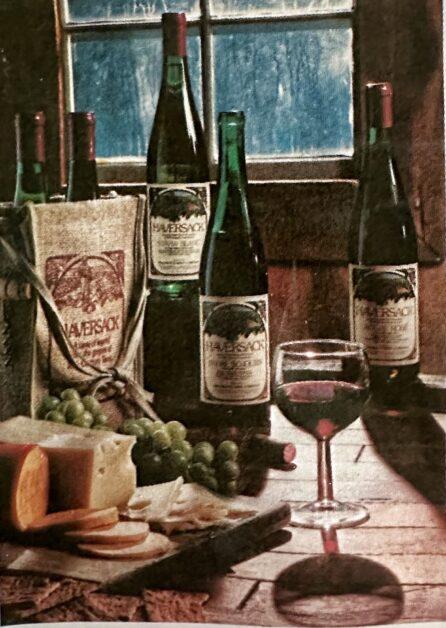
Haversack Epilogue
The only personal reflection to this story that I can ado occurred on one of my visits to Fredericksburg. On that trip, I asked several “old timers” in the wine industry up there if they knew anything about Joyner or his Haversack Wine Company. One person declined to say anything, but gave me a copy of an old and oversized promotional piece that they had in the bottom of a filing cabinet. It was something that Joyner had printed in the 1970s complete with Haversack wine descriptions, and Joyner’s missionary story with photos of the winery building and Mrs. Johnson planting a grapevine. Another person, who wished to remain anonymous, said, “Let me just say that Joyner was likely a much better PR guy than he was at running a winery.”
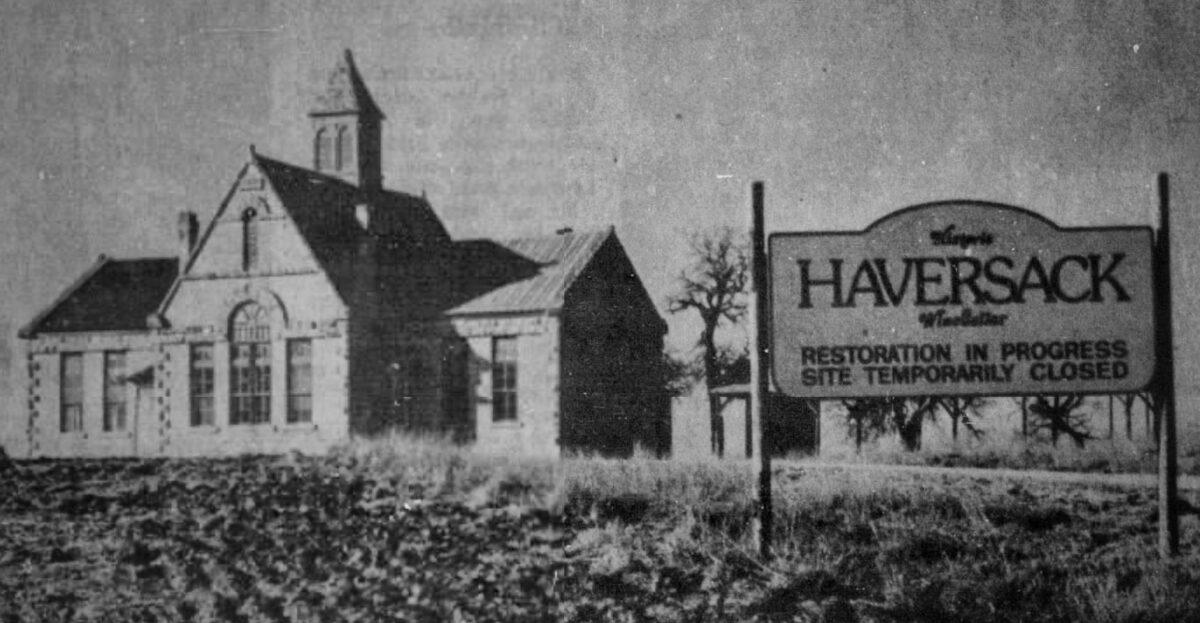
Credits: News stories and images from various Texas newspapers found on www.newspapers.com

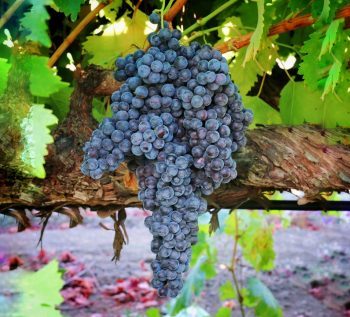
Be the first to comment